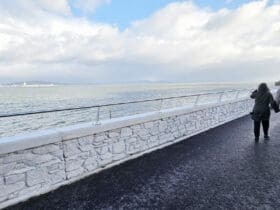Archaeologists have unearthed fascinating new evidence of one of Wales’ most powerful industrial stories.
They are working hard to record hidden historical features on Swansea’s Hafod-Morfa Copperworks site.


Over the next few years the location will be transformed for the use of future generations. Construction is due to start soon. The site will include the renovation of the historic Powerhouse building. Wales’s Penderyn Distillery will expand there and to fit it out as a new distillery and visitor centre.


Swansea Council is overseeing the transformation as part of its plans to regenerate the lower River Tawe corridor.
Richard Lewis, managing director of Monmouthshire-based Black Mountains Archaeology, said: “There have been some great finds. Some date back to the early 1800s, others are from as late as the 1940s.
“We’re recording everything of note as 3D models and our report – in paper and digital form – will be available to everybody who needs access to the information in years to come.
“It’s a tremendously complex site, with structures built, used, demolished and their material then recycled for the development of subsequent buildings.
“Our work is helping to reveal how the site’s layout evolved through the years. This is something that previous records have not shown.
“For archaeologists, this is a hugely exciting site because of its multi-phased development, its complexity and its pivotal place in the world’s industrial history.”
Robert Francis-Davies, the council’s cabinet member for investment, regeneration and tourism, said: “We’re grateful to Black Mountains Archaeology for the work they’re carrying out. It will help tell the story of Swansea’s great copper making heritage.
“The copperworks is a major part of our history and this site will play a powerful role in our future.
“We want to make the riverside corridor a key to unlocking Swansea’s great future potential.”
The council secured a £3.75m National Lottery Heritage Fund grant for the site’s transformation work, with additional works to other historical buildings in the vicinity funded by Welsh Government Targeted Regeneration Investment funding.
The council worked with partners – including Penderyn Whisky and Swansea University – to create the National Lottery Heritage Fund bid.
A team of four archaeologists started work with others such as plant operators on the site in mid-November. They will remain there until the end of January.
They are working on a site close to a former canal dock where coal and limestone was unloaded by hand and taken into the works on horse-drawn drams.
Finds have included the tiled floor of a 1940s bathhouse, complete with porcelain shower trays used over the years by thousands of copper workers leaving another shift undertaken in hot, dirty, hazardous conditions.
Black Mountains have found a water inlet of a body of water possibly once used as a mill pond, generations of industrial waste and even a World War Two air raid shelter made of reinforced concrete.
Mr Lewis and his team have uncovered an old memorial garden used to remember workers who died in World War Two and in accidents at the works. A memorial plaque from the garden currently stands at the nearby Landore Social Club, with more than 50 names engraved on it.
They have found pipework and cable ducts, an old tramway and old tanks used to hold fluids used in the copper making process. A hand-painted Georgian era teapot and old light fittings lie on amongst other finds.
Mr Lewis said: “Swansea once produced 90% of the world’s copper. Pioneering copper making processes were invented and fine-tuned here – and the same processes are still used around the world.
“There are so many things we don’t know about the Hafod-Morfa Copperworks site – and probably so many things we’ll never know.
“A lot of the structures were not well built – they were built on industrial waste and were meant to be ephemeral – but they tell a story of great human endeavour.
“Swansea’s copper industry of the 19th and early 20th centuries was rather like the global tech companies of today, like Google. It pioneered new ways of doing things, did business around the globe and had a profound effect on the way people live around the world.
“I’m glad we can play a part in improving our knowledge about it and preserving the memories.”
Also involved with the archaeological dig are structural engineers Hydrock and GWP Architecture.
Matthew Ace, of Hydrock, said: “It has been fascinating to see Richard Lewis and his team uncover the history of the site over recent months. This has helped the project team re-shape this fantastic new development to preserve and respect Swansea’s industrial past.”
Richard Townend, of GWP Architecture, said “The scale and condition of the archaeology uncovered to date by BMA is truly captivating. It offers rare glimpses into the site’s historic past. The finalised design will continue to respect these discoveries alongside the proposed new-build elements.”








Leave a Reply
View Comments